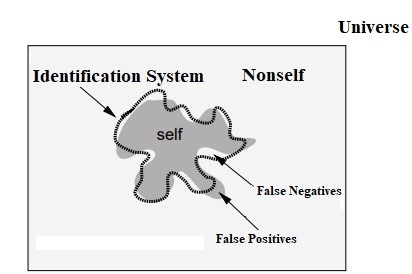Artificial Immune System Implementation for Predicting WM Presence from MYD88 and CXCR4
Main Article Content
Abstract
Waldenstrom’s Macroglobulinemia (WM) is a rare malignancy that affects human blood cells and spreads slowly. The development of WM occurs whenever the blood cells undergo genetic changes. Better therapies can be offered by the healthcare sector to get rid of the symptoms that cannot be cured. Everyone in the healthcare sector is aware that genetic abnormalities cause WM, but they are unsure of what causes the alterations. The risk factors that increase the number of WM's aberrant cells have been found. The greatest risk variables have a fatal impact on humans. The healthcare sector is working to save lives by offering better care. Only when WM is discovered earlier when it is treatable with better care and potent medications, is it very likely. For analysing the healthcare data associated with WM, a number of prior research studies have suggested both standard and unique software models and techniques. However, the accuracy is subpar and inefficient in terms of both time and money. To analyse the genomic dataset and detect Waldenstrom's Macroglobulinemia or its symptoms, this research explored this issue and suggested an Artificial Immune System (AIS) approach. Software written in Python is used to conduct the experiment and validate the findings. by contrasting the trial outcomes with other performance assessment techniques. The analysis reveals that the suggested AIS algorithm works better than the others.
Article Details
References
Jon Timmis, Mark Neal, John Hunt, (2000), “An artificial immune system for data analysis”, BioSystems, Elsevier, Vol. 55, PP. 143–150, DOI: 10.1016/S0303-2647(99)00092-1.
Rucha Tambe, Sarang Mahajan, Urmil Shah, Mohit Agrawal, Bhushan Garware, (2019), “Towards Designing an Automated Classification of Lymphoma subtypes using Deep Neural Networks”, ACM, PP. 143-149, DOI: https://doi.org/10.1145/3297001.3297019.
Lei Ding, Guangwei Liu, Xianxiang Zhang, Shanglong Liu, Shuai Li, Zhengdong Zhang, Yuting Guo, Yun Lu, (2020), “A deep learning nomogram kit for predicting metastatic lymph nodes in rectal cancer”, Cancer Medicine.
Steven A. Hofmeyr. A Immunological Model of Distributed Detection and its Application to Computer Security. PhD thesis, Department of Computer Sciences, University of New Mexico, April 1999.
J. K. Percus, O. E. Percus, and A. S. Perelson. Predicting the size of the antibody-combining region from consideration of efficient self/nonself discrimination. In Procedings of the National Academy of Science 90, pages 1691–1695, 1993.
Towell, G. G., Shavlik, J. W., & Noordewier, M. O. (1990, July). Refinement of approximate domain theories by knowledge-based neural networks. In Proceedings of the eighth National conference on Artificial intelligence (Vol. 2, pp. 861-866).
Forrest, S., Hightower, R., & Perelson, A. S. (1996). The Baldwin effect in the immune system: Learning by somatic hypermutation. Individual Plasticity in Evolving Populations: Models and Algorithms.
Farmer, J. D., Packard, N. H., & Perelson, A. S. (1986). The immune system, adaptation, and machine learning. Physica D: Nonlinear Phenomena, 22(1-3), 187-204.
Golberg, D. E. (1989). Genetic algorithms in search, optimization, and machine learning. Addison Wesley, 1989(102), 36.
U. Aickelin and D. Dasgupta, Edmund K. Burke (Editor), Graham Kendall (Editor), “Search Methodologies: Introductory Tutorials in Optimization and Decision Support Techniques”, University of Nottingham, Nottingham NG8 1BB, UK.
L. N. de Castro and J. Timmis, (2014), “Artificial immune system: A novel paradigm to pattern recognition”, Vol. 8, ANNIS.
Rumelhart, D. E., McClelland, J. L. & The PDP Research Group, Eds. (1986), Parallel Distributed Processing, Cambridge MIT Press.
Hopfield, J. J. (1984), “Neurons with Graded Response Have Collective Computational Properties Like Those of Two-State Neurons”, Proc. Natl. Acad. Sci. USA, 81, pp. 3088-3092.
Kohonen T. (1982), “Self-Organized Formation of Topologically Correct Feature Maps”, Biological Cybernetics, 43, pp. 59-69.
Haykin S. (1999), Neural Networks – A Comprehensive Foundation, Prentice Hall, 2 nd Ed.

